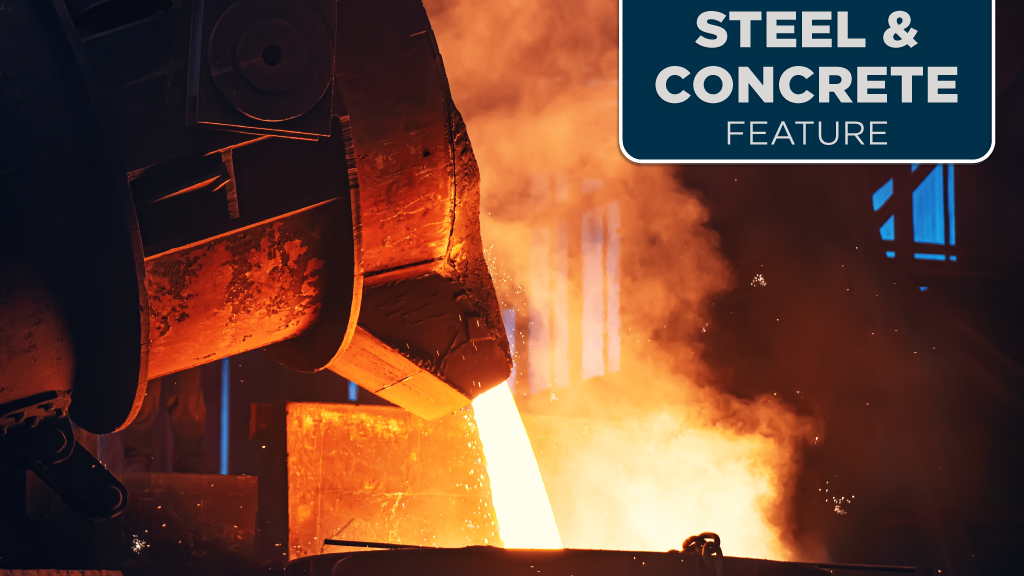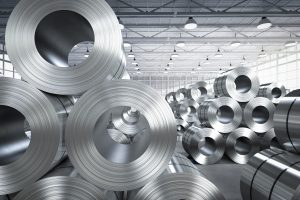Steel producers in Canada have set their sights set on getting to net-zero carbon emissions by 2050. However, they know it won’t be easy and are working with government and organizations to develop new technologies and unlock new pathways to decarbonize the sector and reduce greenhouse gas (GHG) emissions.
Specifically, the industry is looking at using hydrogen in the steel production process, the feasibility and real practicalities of carbon capture and storage systems and using electricity to refine iron ore into iron and steel.
“I think that this is going to be a very heavy and a hard lift, not just for the steel industry but also for our country as a whole to get to net zero,” says Catherine Cobden, president and CEO of the Canadian Steel Producers Association (CSPA). “I think we have to stay very factual about this. This is not easy but we’re optimistic.
“We see some great partnerships. We see some of the best brains in Canada that are focused on this, no question. But it’s not going to be easy. We need to work with others to move forward and that’s our hope.”
The Canadian steel industry has made strides. A report prepared last November by Golder Associates Ltd. and Thorn Associates found that investments to reduce energy consumption and emissions has had success. Based on an assessment of the 10 largest steel-producing nations, the Canadian sector has the lowest GHG intensity globally for the integrated steel making plants that produce steel from iron ore and the second lowest GHG intensity globally for electric arc furnace plants that produce steel from steel scrap.
However, the same report noted that a technology scan demonstrates that while the Canadian sector is advanced in implementing energy efficiency measures, there is still room for improvement and process efficiency improvements will not be sufficient to achieve emissions reductions necessary to get to net zero.
According to the report, policy support for breakthrough technologies from government will be needed to continue the Canadian steel sector’s progress in energy and GHG reductions.
Corben says that some of the technologies needed to further the cause are beyond the scope of the steel industry, and it will rely on government and others to help move the yardsticks with new technology.
“We’re looking for things like affordable hydrogen or carbon capture storage or utilization technology, cleaner grids. All these things together will be really helpful to the industry’s decarbonization but unfortunately, they are out of our control. We need others to work with us on getting those solutions to the table.”
For example, says Corben, the geological capacity to store carbon near existing steel plants must be examined.
The CSPA, which is the national voice of Canada’s primary steel and the pipe and tube industry, has been working on the issue since 2019 when the board of directors mandated the organization to develop a path forward on climate change and consider how to get to net zero. An action plan was developed and released in 2020 that enshrined the aspirational goal that the steel sector must be net zero by 2050.
“It outlined the key things we need as a sector to have any possibility at all to achieving net zero,” explains Cobden. “We kind of map out the key things that are necessary to signal to policymakers and to our marketplace that we’re on the journey, but it’s going to take a collective effort and frankly some time.”
Since then, all CSPA member companies have been looking at their decarbonization plans. Two companies have already announced significant projects to reduce their emissions by 45 per cent before 2030. Combined, the projects will remove six million tonnes of CO2 emissions per year by the end of this decade.
The CSPA says that Canadian steel producers are committed to the reduction of greenhouse gases and the industry has a proven track record for reducing carbon emissions.
CSPA members are also undertaking critically important research in support of the longer term decarbonization of the steel sector. An important collaboration is a co-operative research agenda under way between Canmet Labs and the Canadian Carbonization Research Association (CCRA) to create new technological solutions to the challenge.
The two are working together to implement technologies to reduce GHG emissions of ironmaking and steelmaking using existing production facilities and looking at waste heat recovery technology. The near-term goal is also to look at hydrogen and natural gas as alternate heating sources for iron and steel production.
“Even if we can get hydrogen to the gate, we need the research to take place that shows how we can make steel with it,” says Cobden. “So, all that is going on as we speak and we’re trying to make progress on that front.”
Earlier this year, the CSPA expressed its support for the federal 2030 Emission Reduction Plan tabled in the House of Commons as it will help to create more business certainty over the remainder of the decade while providing more details on the measures Canada will deploy to bring the country closer to a net-zero future.
As the CSPA noted, the plan identifies the important role of clean electricity grids, carbon capture and storage, and the future role of hydrogen amongst others.
“It certainly does create some certainty and helps us understand better what the government’s driving at,” says Corben. “It also really highlighted that no one is going to get to net-zero on their own, and also that this is going to take an all-hands-on-deck approach and we’re all going to have to work on this.”










Recent Comments
comments for this post are closed